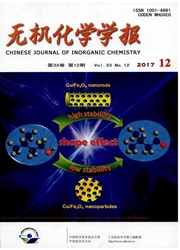

 中文摘要:
中文摘要:
采用氢电弧等离子体方法成功地合成了硅镍合金纳米颗粒,分别用透射电子显微镜(TEM)、X射线衍射(XRD)和能谱分析(EDS)的方法对其形貌、晶体结构和元素化学成分进行了表征,结果显示得到的纳米颗粒由Si和Si2Ni两相组成。电化学测量的结果表明,在锂嵌入硅镍纳米颗粒的过程中,硅充当活性中心,形成了非晶态的LixSi合金,并且在以后的循环中一直保持非晶状态,而其中的Si2Ni作为惰性成分,不与Li反应,而是充当缓冲基体及导电剂的作用。硅镍合金纳米颗粒的可逆容量达1304mAh·g^-1,并且循环性能明显优于纯硅材料。硅镍合金纳米颗粒与石墨组成的复合材料,不但具有较高的可逆比容量,而且有较好的循环稳定性,20次循环后比容量仍为518mAh·g^-1,容量保持率为86%,是有希望的锂离子电池负极材料。
 英文摘要:
英文摘要:
Si-Ni alloy Nanoparticles have been prepared by hydrogen plasma reaction as anode materials of a lithium ion battery. The morphology, crystal structure and chemical composition of the nanoparticles obtained in this study were investigated by transmission electron microscopy (TEM), X-ray diffraction (XRD). During lithium insertion into the alloy electrodes, Si acts as an active centre, reacting with Li to form amorphous LixSi alloys, while the Si2Ni in the material plays the role of matrix as an inertia phase, which can buffer silicon volume expansion and raise electric conductivity among silicon particles. A high lithium storage capacity of 1 304 mAh·g^-1 is observed for the Si-Ni alloy, with some reversibility. The composite powder consisted of Si-Ni nanoparticles and graphite has high reversible specific capacity and good cycling stability. Electrochemical cycling tests show that the capacity retention at the 20 th cycle is 86%, and specific capacity is 518 mAh· g^-1.
 同期刊论文项目
同期刊论文项目
 同项目期刊论文
同项目期刊论文
 期刊信息
期刊信息
